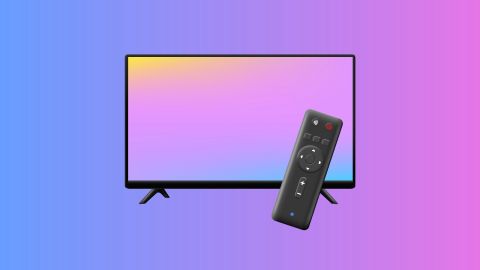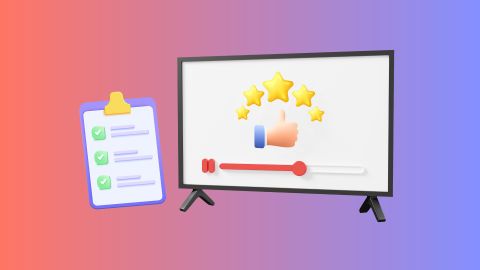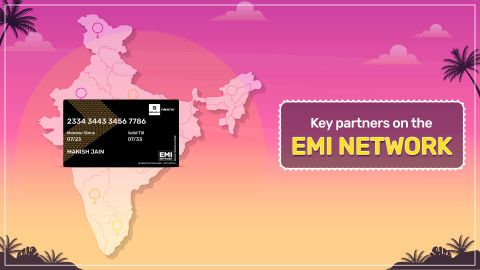Today, there are many types of TV screens, each built for different needs. LED TVs are common and budget friendly, while OLED models give deeper blacks and brighter colours. QLED TVs use quantum dot technology for sharper visuals. Smart TVs let you stream content directly, while Android TVs give you access to Google apps. Each type of TV has strengths, making it important to choose based on your viewing habits, room size, and how much you wish to spend.
Why spend more when you can save more? Use the Maha Bachat savings calculator to combine dealer offers, brand offers, and Bajaj offers to bring down your purchase cost. Calculate your extra savings today!
Key features of the TV
- Smart connectivity: Modern TVs include smart features that let you use apps, streaming services, and online content directly. With Wi-Fi, ethernet ports, and Bluetooth, you can easily connect other devices and enjoy a smooth entertainment experience.
- High-definition display: TVs are available in HD, Full HD, 4K, and 8K resolutions. Higher resolution means sharper, clearer images. HDR (High Dynamic Range) also improves contrast and colours, making visuals look more realistic.
- Advanced audio systems: Many TVs now come with in-built audio technology like Dolby Atmos or DTS for immersive sound. Some models also support external sound systems, letting you set up a home theatre with powerful audio.
- Voice control: Voice features allow you to control your TV using commands. With Google Assistant or Amazon Alexa, you can search for shows, change settings, or even control smart home devices hands-free.
- Gaming features: New TVs include gamer-friendly features like low input lag, high refresh rates, and special gaming modes. These ensure smooth, fast gameplay and a better overall gaming experience.
Choosing the best TV screen type for your needs
When buying a TV, knowing the different types of TV screens helps you choose wisely. Options like LED, OLED and QLED offer unique benefits. Here is a simple comparison:
Screen type
|
Description
|
Best for
|
LED
|
Energy-efficient, slim, and bright
|
Everyday use and budget buyers
|
OLED
|
Deep blacks, vibrant colours, high contrast
|
Movie lovers and premium viewing
|
QLED
|
Bright and accurate colours with quantum dot tech
|
Bright rooms and lifelike visuals
|
LCD
|
Affordable and widely used
|
Budget-conscious buyers
|
Plasma
|
Great colours and fast response
|
Sports and action content (less common now)
|
- CRT: CRT (Cathode Ray Tube) TVs were once popular before flat screens arrived. They use electron beams to show images and give good colour and angles. They are bulky and have now been replaced by LED and OLED models.
- Plasma: Plasma TVs were early flat screens with strong blacks and contrast. They used charged gases to create images. These TVs delivered rich colours but used more energy, and newer LED and OLED models have taken their place.
- LCD: LCD (Liquid Crystal Display) TVs use liquid crystals between glass layers. They are lightweight, affordable, and widely used. They offer good colours and brightness but may not show deep blacks as well as OLED or plasma.
- LED: LED (Light Emitting Diode) TVs are improved LCDs that use LED backlighting. They are bright, energy-efficient, slim, and reliable. They are one of the most common TVs today and suit almost every viewing need.
- OLED: OLED (Organic Light Emitting Diode) TVs use organic compounds that light up when powered. They provide perfect blacks, vivid colours, and sharp contrast. They are premium TVs and popular among movie enthusiasts.
- QLED: QLED (Quantum Dot LED) TVs enhance LED screens using quantum dots. They produce bright, sharp, and colourful images. They are ideal for bright rooms and are popular with gamers and sports fans.
- Mini-LED: Mini-LED TVs use thousands of tiny LEDs for backlighting. This creates deeper blacks and better contrast compared to standard LED TVs. They are energy efficient and a good choice for high-quality viewing at reasonable prices.
- Micro-LED: Micro-LED is the newest technology. It works like OLED but with better brightness and durability. It uses tiny LEDs to form images with outstanding contrast and colour. Micro-LED TVs offer top picture quality with no burn-in issues.
Types of smart TVs according to screen sizes
Choosing the right screen size depends on your room and how you use the TV:
- 32-inch and below: Best for kitchens, bedrooms, or small flats. Good for casual viewing.
- 40 to 49-inch: Ideal for medium rooms and balanced viewing. Suits most living rooms.
- 50 to 59-inch: Great for larger rooms and entertainment spaces. Works well with 4K and HDR.
- 60 to 69-inch: Perfect for home theatre setups and big living rooms. Offers a cinema-like feel.
- 70-inch and above: Designed for very large spaces. Gives a truly immersive and premium experience.
Price list of TVs in India (November 2025)
Here are some popular models that show the variety in price and features across types of TVs:
Model
|
Price
|
Description
|
TCL 55 inch 139 cm 55C645 4K Ultra HD Smart QLED Google TV
|
Rs. 38,990
|
A QLED TV with sharp visuals and Google features for smooth streaming.
|
Xiaomi 125 cm (50 inch) X Series 4K Ultra HD Smart Android LED TV L50M7-A2IN (Black)
|
Rs. 34,999
|
Android smart TV with a large screen and access to many apps.
|
Samsung 108 cm (43 inch) Crystal 4K Neo Series Ultra HD Smart LED TV UA43AUE65AKXXL (Black)
|
Rs. 31,876
|
A compact smart LED TV with 4K clarity for family viewing.
|
Disclaimer: The features, availability, and pricing of each model are subject to change and may vary. For the most accurate and up-to-date information, please visit the official website.
Note: You can use Bajaj Finserv’s financing options to split any purchase above Rs. 5,000 into Easy EMIs.
Before you decide, explore the latest offers. You may find a great deal on a model that matches your needs.
Care and maintenance tips for every type of TV
- Regular cleaning: Use a microfiber cloth to clean the screen and body. Avoid harsh chemicals.
- Proper placement: Keep the TV in a ventilated spot, away from direct heat or sunlight.
- Cable management: Keep wires neat and avoid strain on ports. This also makes your space look tidy.
- Update software: Update the TV software to enjoy new features and improved performance.
- Power off correctly: Use the remote or power button. Avoid unplugging directly to protect the hardware.
Get electronics and appliances on Easy EMIs with Bajaj Finserv
Upgrading your home with the latest electronics and appliances is now easier and more affordable with Bajaj Finserv’s flexible financing options. You can also maximise your savings by using the Maha Bachat Savings Calculator—a smart tool that combines brand offers, dealer offers, and EMI offers, all in one place, helping you lower the overall cost while still paying in small, bite-sized instalments. Follow these steps to get started:
- Explore products on Bajaj Mall: Browse a wide range of electronics and appliances from trusted brands. Compare features like energy ratings, storage capacity, performance settings, and design to choose the right product for your home.
- Visit a partner store: Once you shortlist a model, step into any of Bajaj Finserv’s 1.5 lakh partner stores across 4,000 cities in India. See the product in person, talk to experts, and make a confident decision.
- Choose the Easy EMI Loan option: At checkout, select the Bajaj Finserv Easy EMI Loan. Avail financing of up to Rs. 5 lakh and split the cost into convenient monthly instalments. Some products also come with a zero down payment option.
- Check your loan eligibility online: Plan better by checking your loan eligibility in minutes. Simply enter your mobile number and OTP to know your pre-approved limit.
- Use the EMI Network Card for purchases up to Rs. 3 lakh: Already own the Bajaj Finserv EMI Network Card? Use it for instant, paperless checkout and convert your purchases of up to Rs. 3 lakh into Easy EMIs.
TV by brand
TV by features
TV by size
TVs by brands
TVs by budget









